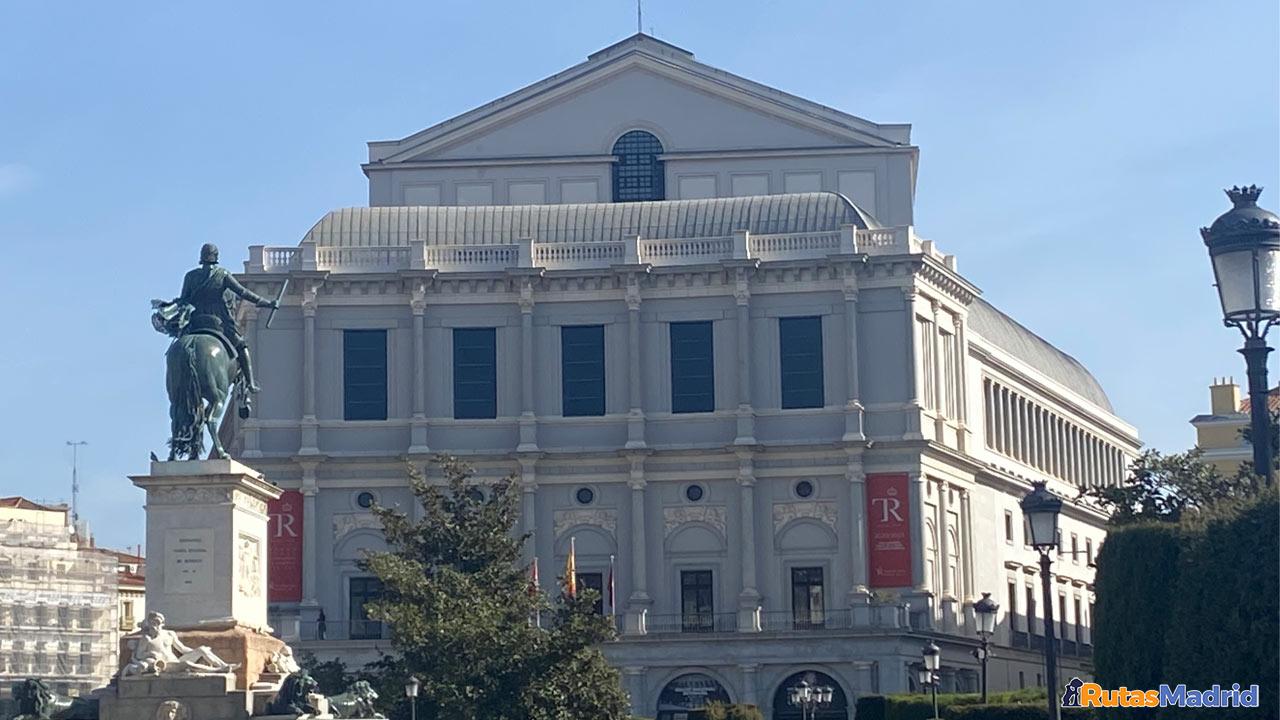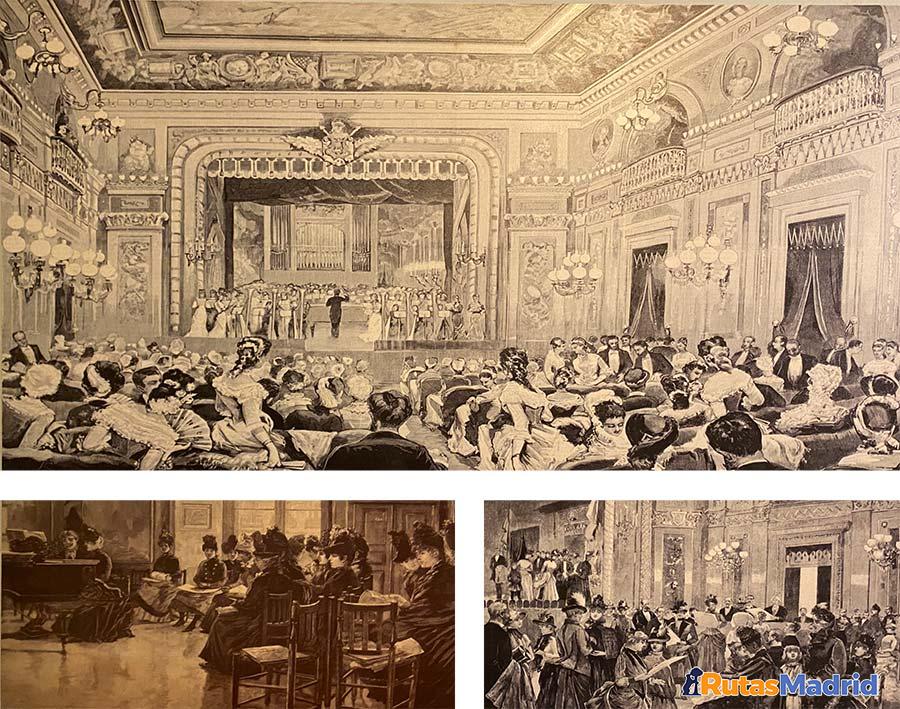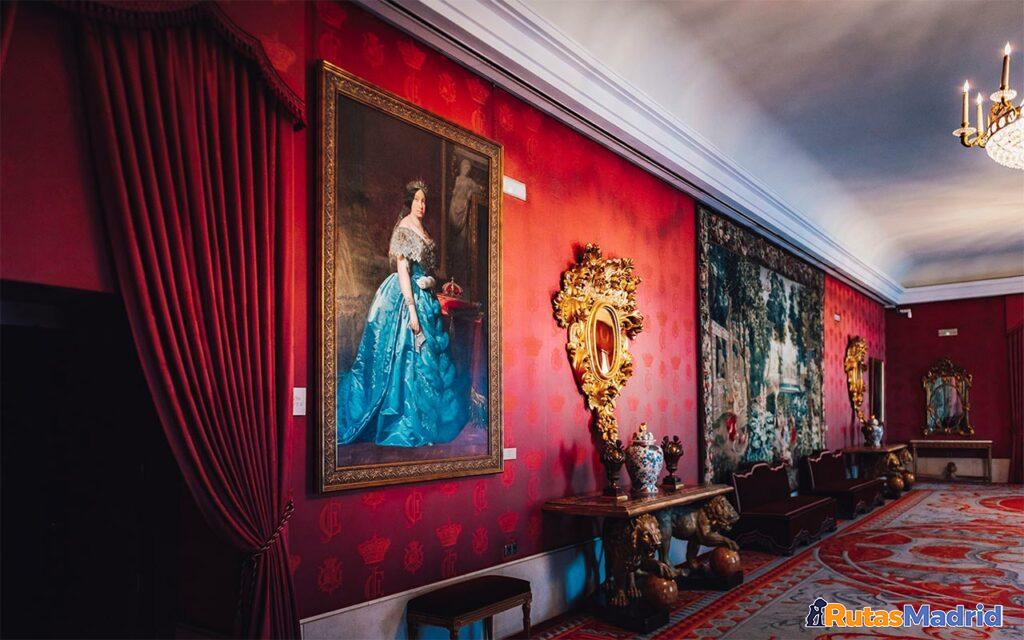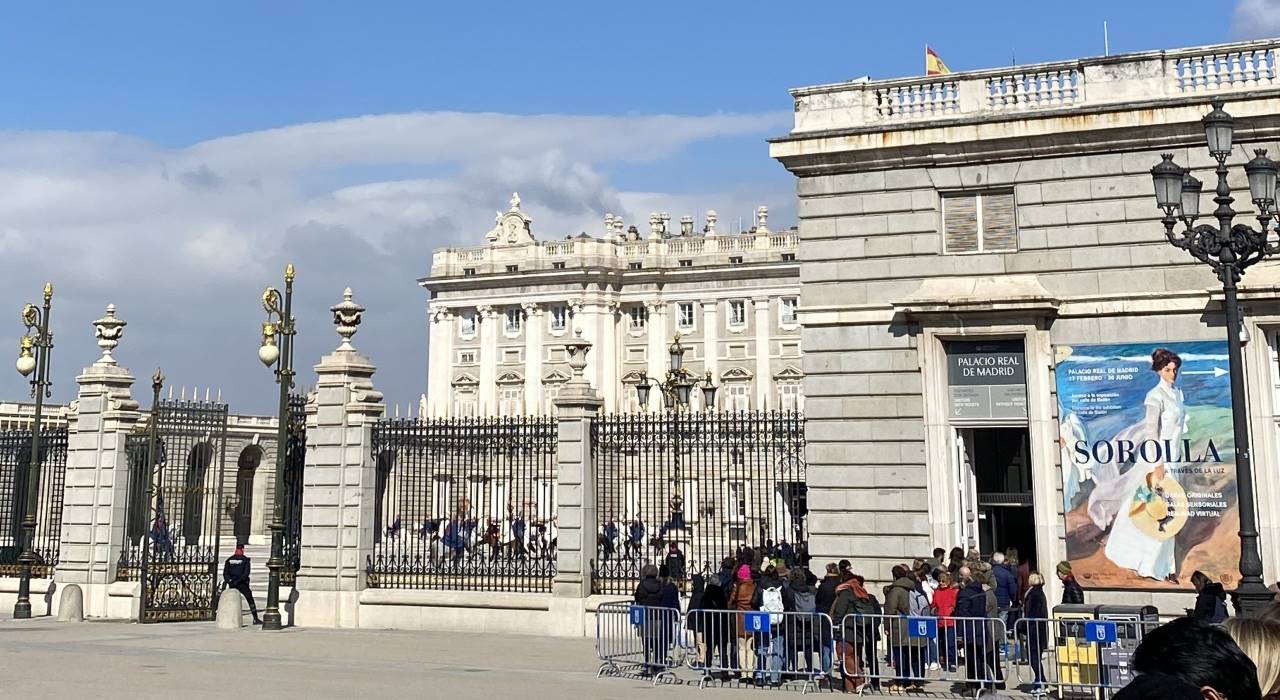
The Royal Theatre of Madrid (Teatro Real) is located in the Plaza de Oriente in front of the Palacio Real and was commissioned by Fernando VII, who decided to build an Opera House similar to those already existing in Paris or London.
To talk about the current Teatro Real we have to mention the origins with the inauguration of the Real Teatro de los Caños del Peral in 1738 with the reign of Felipe V, the first Bourbon king.
History of the Royal Theatre of Madrid
In 1814 the sessions of the Cortes de Cádiz were held, which had previously been moved from San Fernando de Cádiz, but shortly afterwards that same year it was moved to the current Palacio del Senado(then Monasterio de Doña María de Aragón), now theatre and politics would be united under the same roof.
Under the reign of Ferdinand VII, work began on the Teatro Real, and in 1818 the first stone was laid, a fact accompanied by the Royal Order issued for the remodelling of the Plaza de Oriente and the construction of the Teatro Real.
The architect Antonio López Aguado was in charge of the initial design and construction, but the work was finished by Custodio Teodoro Moreno 33 years later, in 1850, when it once again hosted the Congress of Deputies in 1841.
It was under the reign of Isabella II that it became one of the most important theatres in Europe for 75 years.
Despite its success in the lyric coliseum, it was not the same on the economic side.

History of the Teatro Real de Madrid
During those years several institutions and different businessmen were in charge of the theatre, causing millionaire losses and, together with a fire in 1867, decorations and interior areas were lost.
This succession of bad events together with the arrival of the I Republic was renamed Teatro Nacional de la Ópera..
In 1925 the building collapsed due to architectural problems and after the explosion of a powder magazine placed inside during the Civil War, all of which caused it to be closed for 41 years and it was reopened in 1966 as an auditorium and home to the Royal Conservatory of Music and School of Dramatic Art.
It was declared a National Monument in 1997, inaugurated by King Juan Carlos I and Queen Sofia, and in 2021 received the International Opera Award 2021 for Best Opera House.
Curiosities of the Teatro Real
- Did you know that the Teatro Real has 22 floors? It has a capacity of 1,958 seats
- In 1969 the Teatro Real hosted the Eurovision Song Contest following Massiel’s victory the previous year, and Salvador Dalí was in charge of designing the spectacular set.
- In total, the Teatro Real was the venue for the Eurovision Song Contest.
- In total, the Teatro Real covers 78,210 m2
- Behind the curtain is one of the most advanced and innovative stage boxes of any theatre in the world.
- There are 8 floors under the sub-floor which serve as a pit to store the scenery of six different operas.
- The chandelier that decorates the top of the main hall’s stalls is made of rock crystal and bronze and weighs 2,400kilos.
- The chandelier is made of rock crystal and bronze and weighs 2,400kilos.
From the air we can see the theatre is shaped like a coffin possibly paying homage to its first architect Antonio López Aguado, a nearby cemetery or a mass grave are some of the reasons.
But historians believe that the need to increase the number of corridors and corridors around the central rectangle of the part of the stage gave rise to the coffin shape.

Guided visits to the Royal Theatre
Guided tours at the Royal
Did you know that you can enjoy one or several spaces for celebrations, meetings or parties? The Teatro Real rents out its spaces for events.
But if you prefer to get to know the Theatre in more depth, there are several types of visit: with audio guide, backstage technical visit or artistic visit.
Come to the Real!
Location map / How to get there
- Address: Plaza de Isabel II, sn, 28013, Madrid
- Telephone: +34 900 244 848
- Web: https://www.teatroreal.es/



